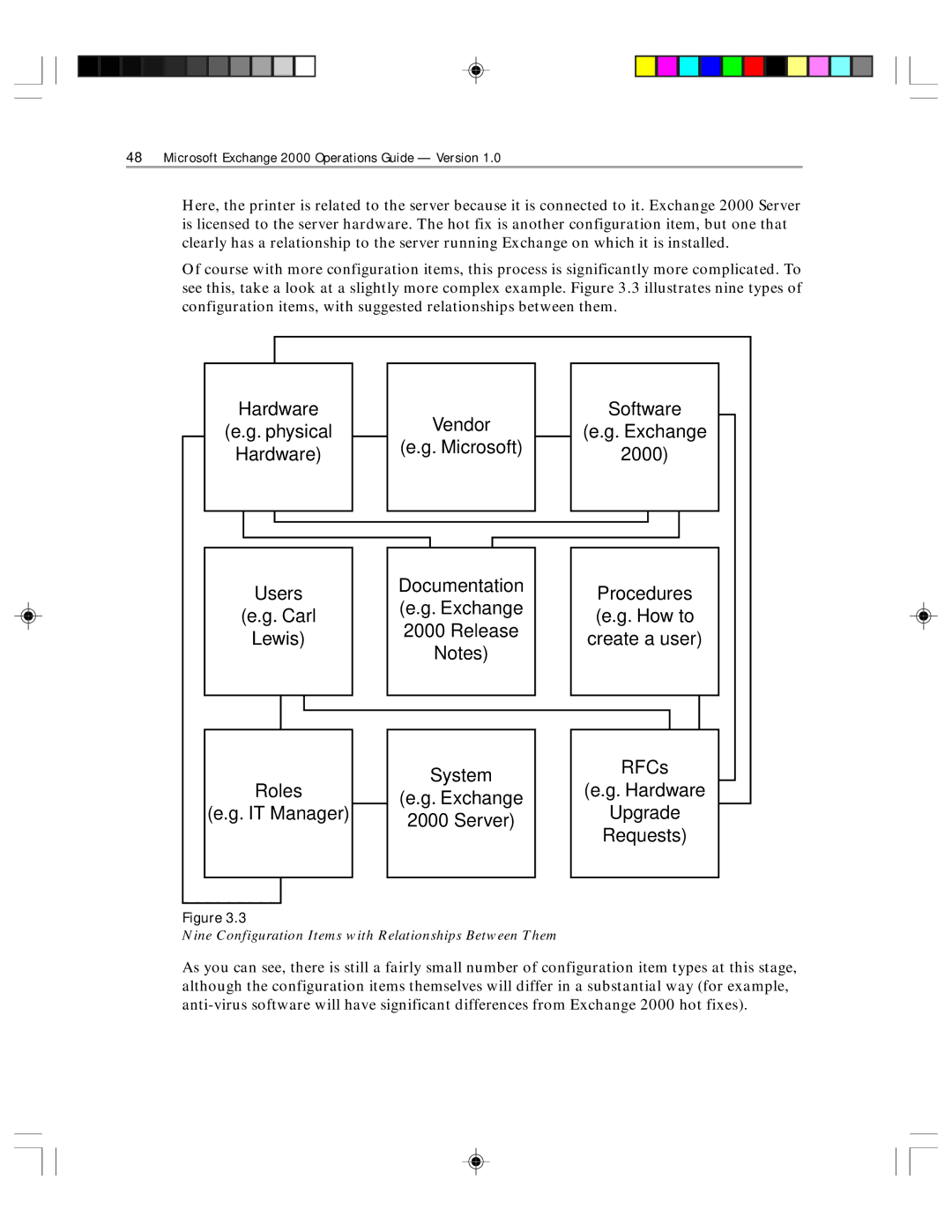
48Microsoft Exchange 2000 Operations Guide — Version 1.0
Here, the printer is related to the server because it is connected to it. Exchange 2000 Server is licensed to the server hardware. The hot fix is another configuration item, but one that clearly has a relationship to the server running Exchange on which it is installed.
Of course with more configuration items, this process is significantly more complicated. To see this, take a look at a slightly more complex example. Figure 3.3 illustrates nine types of configuration items, with suggested relationships between them.
Hardware
(e.g. physical
Hardware)
Vendor
(e.g. Microsoft)
Software
(e.g. Exchange
2000)
Users
(e.g. Carl
Lewis)
Documentation
(e.g. Exchange
2000 Release
Notes)
Procedures (e.g. How to create a user)
Roles
(e.g. IT Manager)
System
(e.g. Exchange
2000 Server)
RFCs
(e.g. Hardware
Upgrade
Requests)
Figure 3.3
Nine Configuration Items with Relationships Between Them
As you can see, there is still a fairly small number of configuration item types at this stage, although the configuration items themselves will differ in a substantial way (for example,
